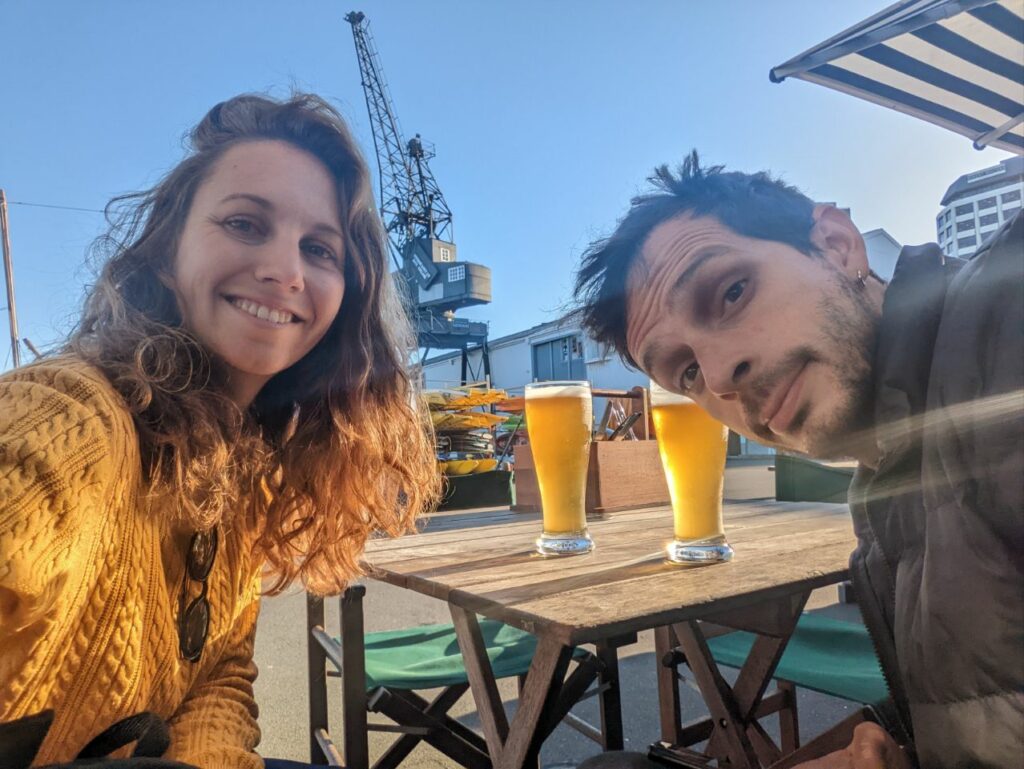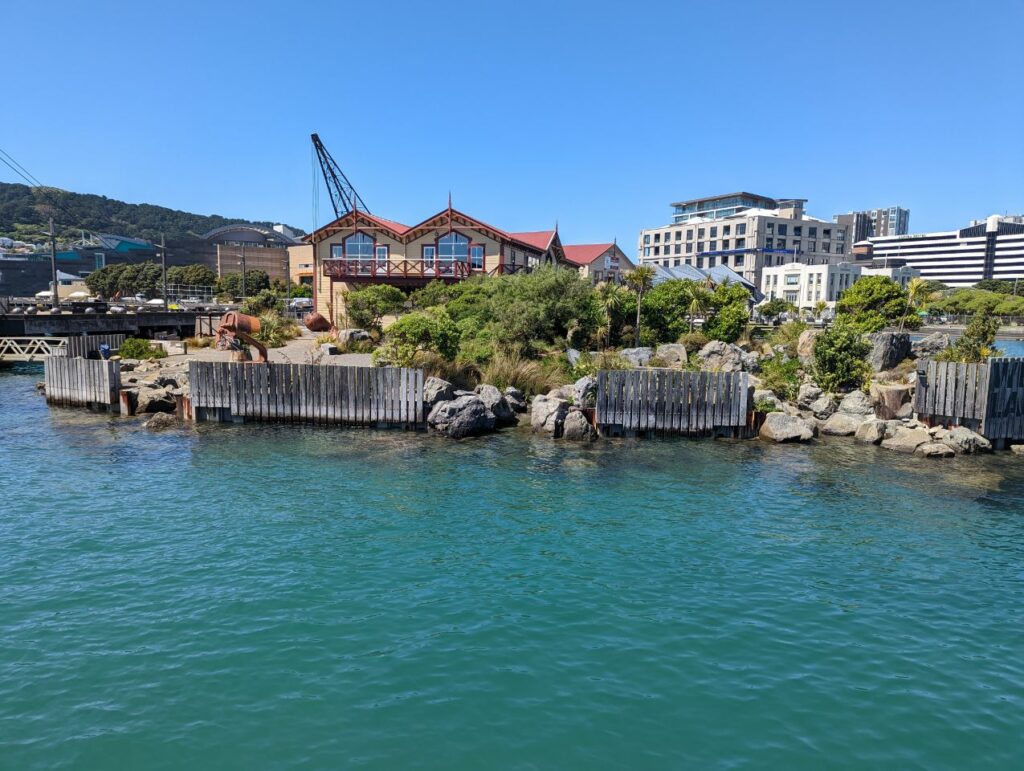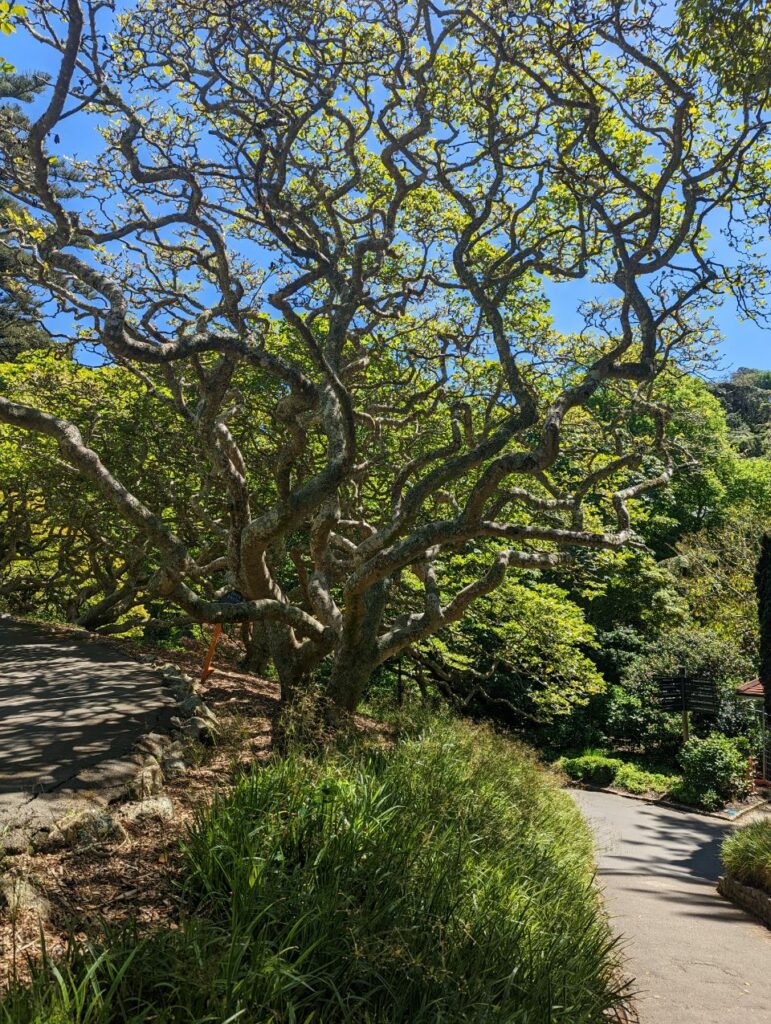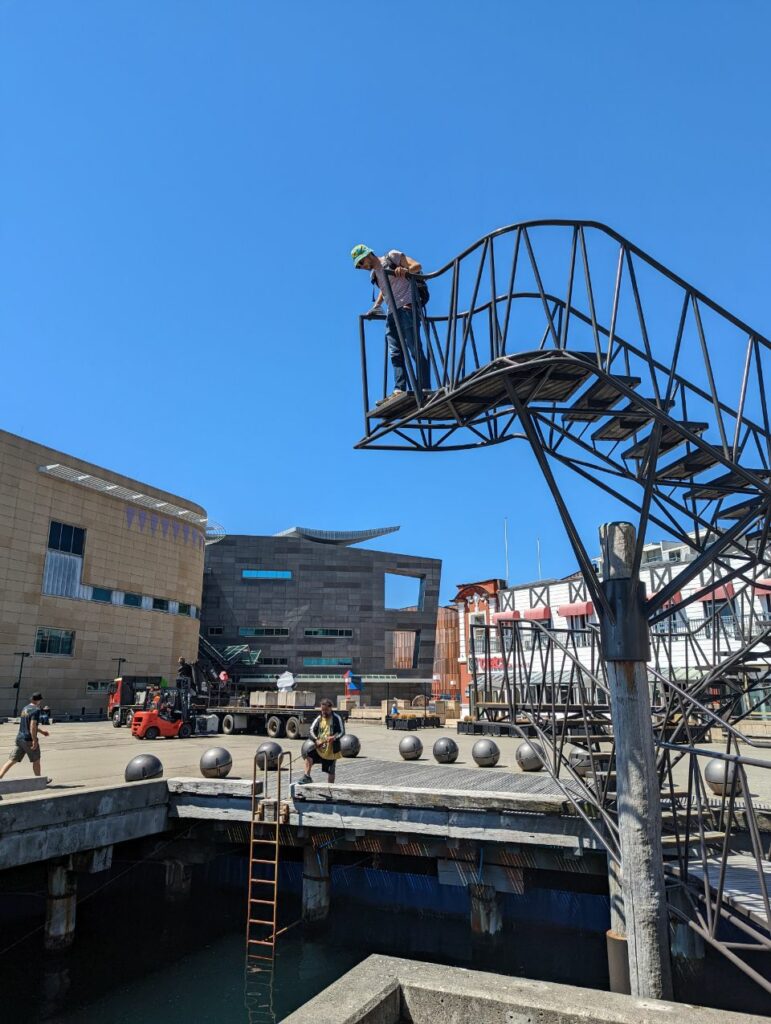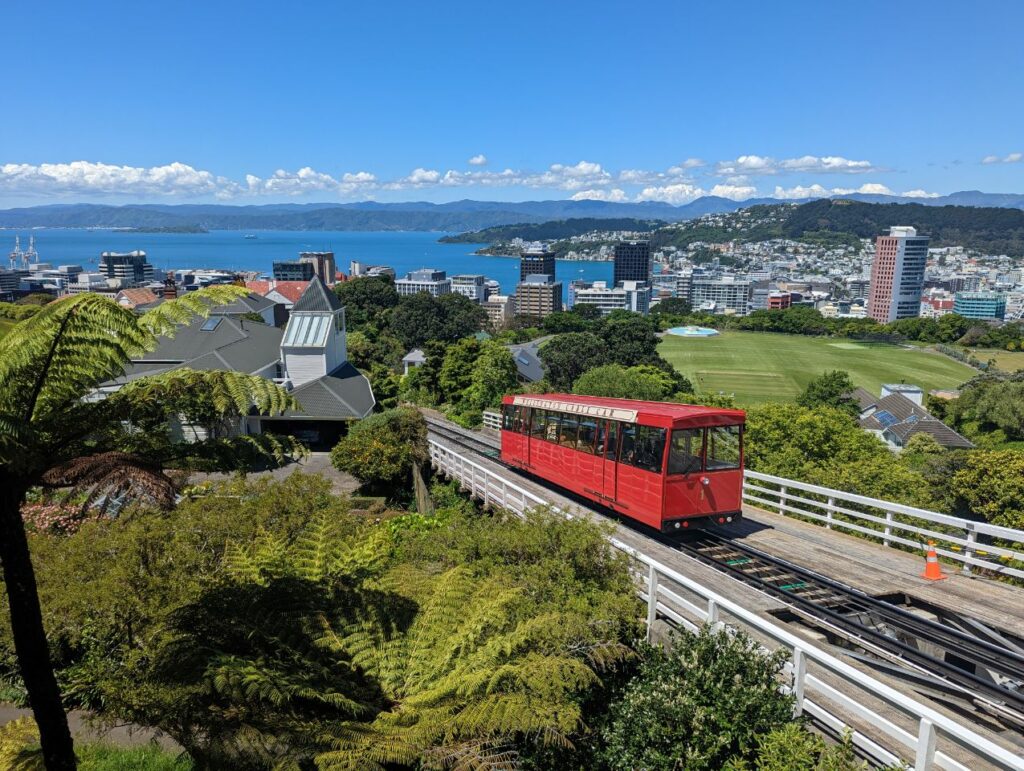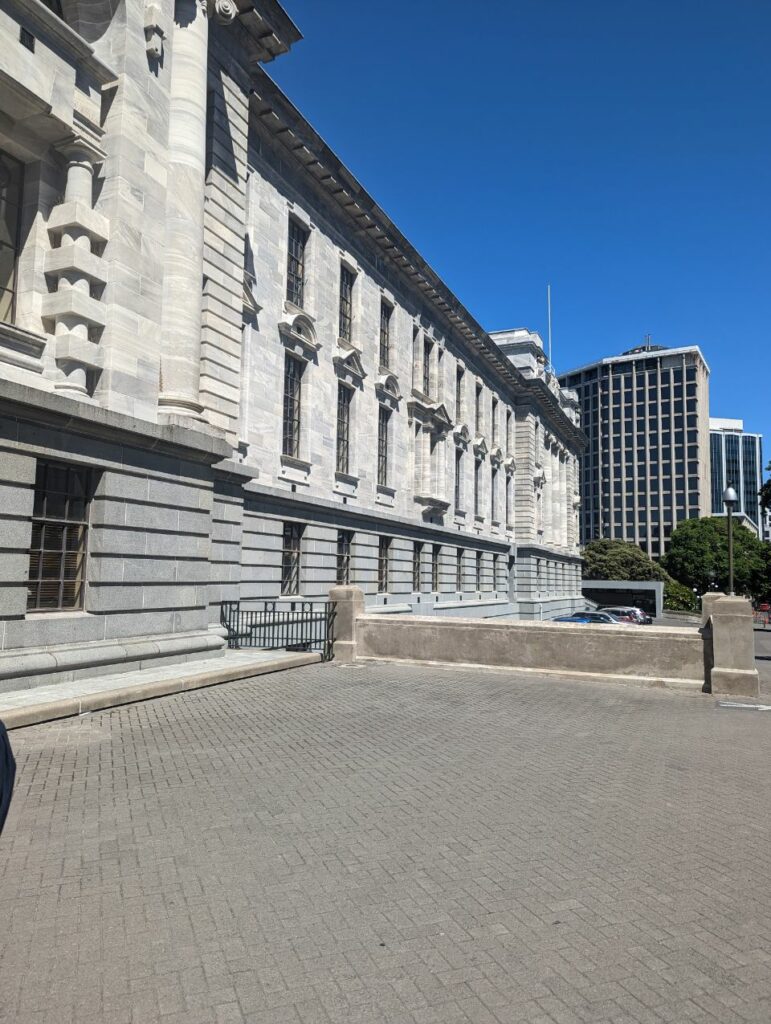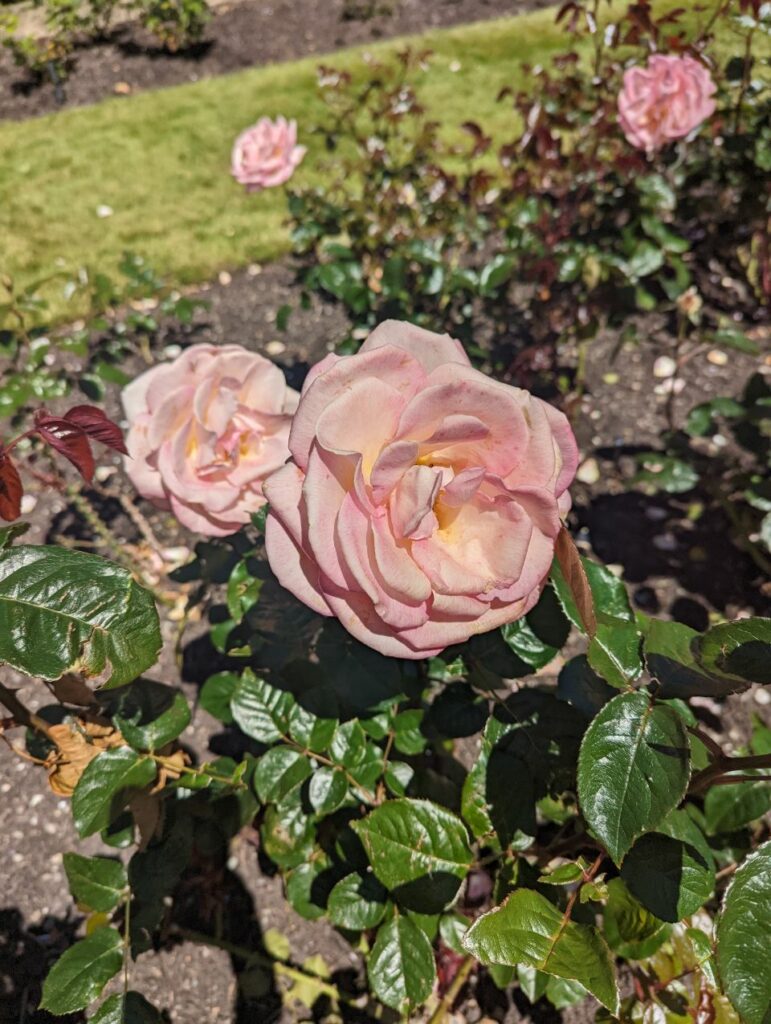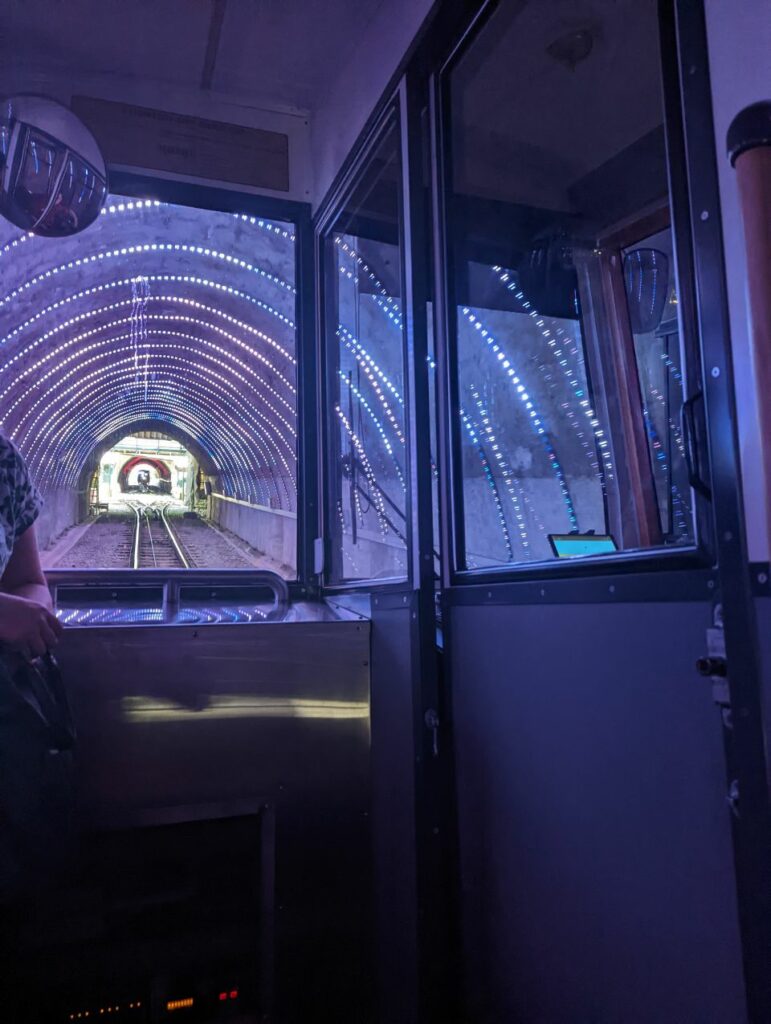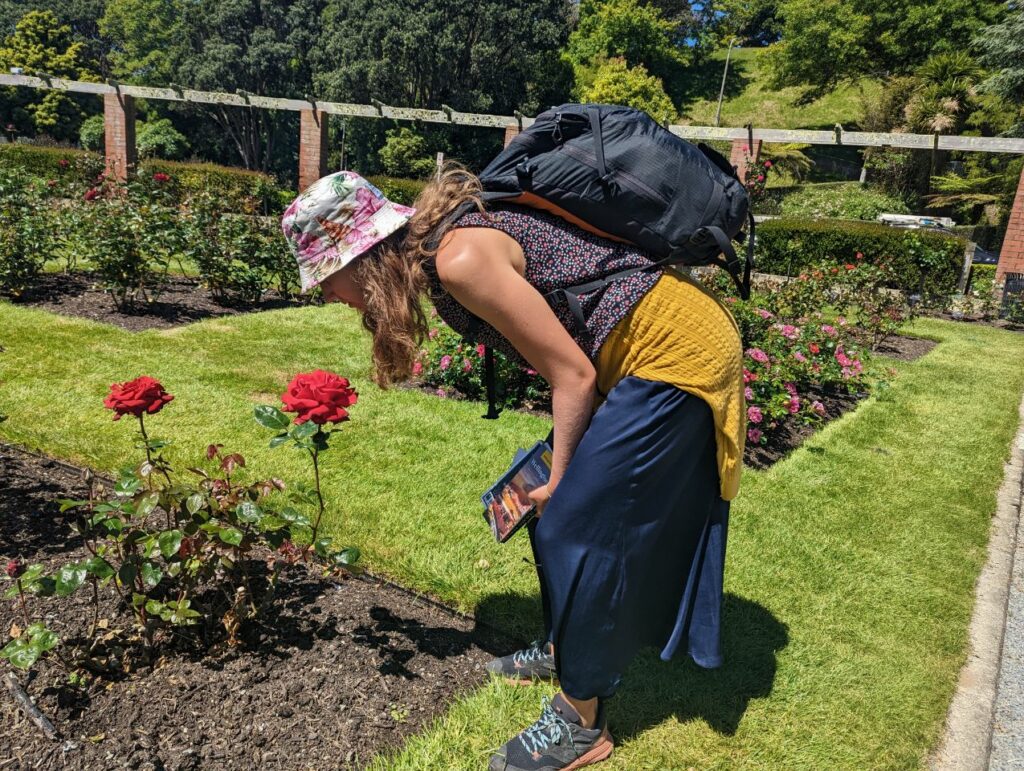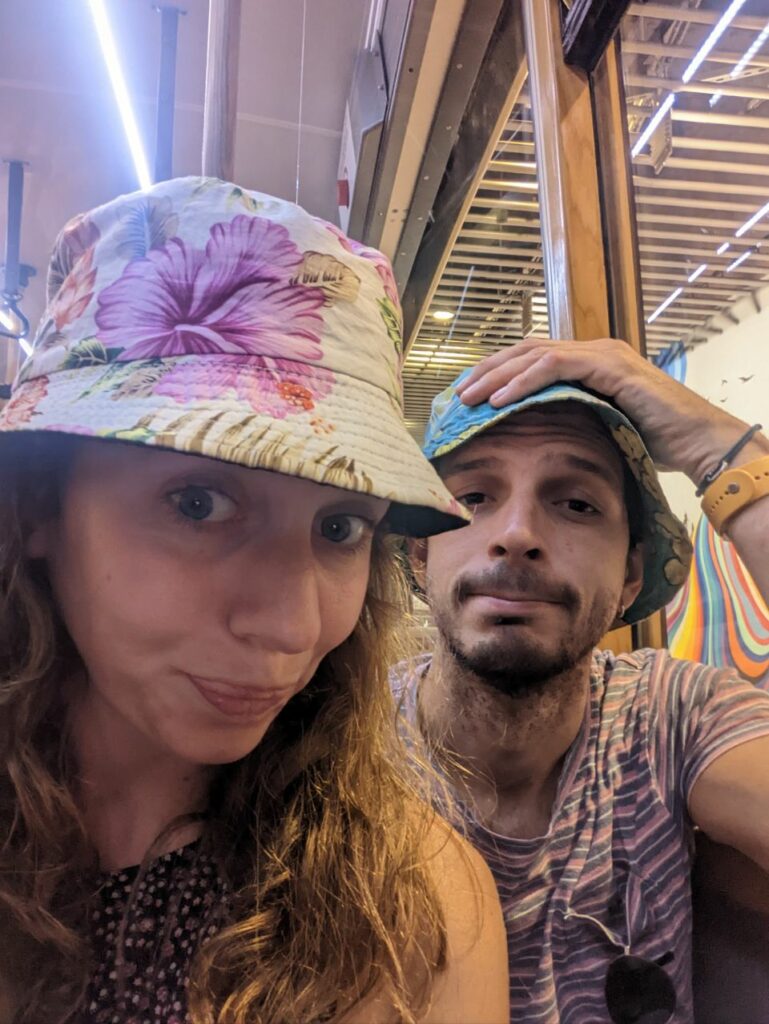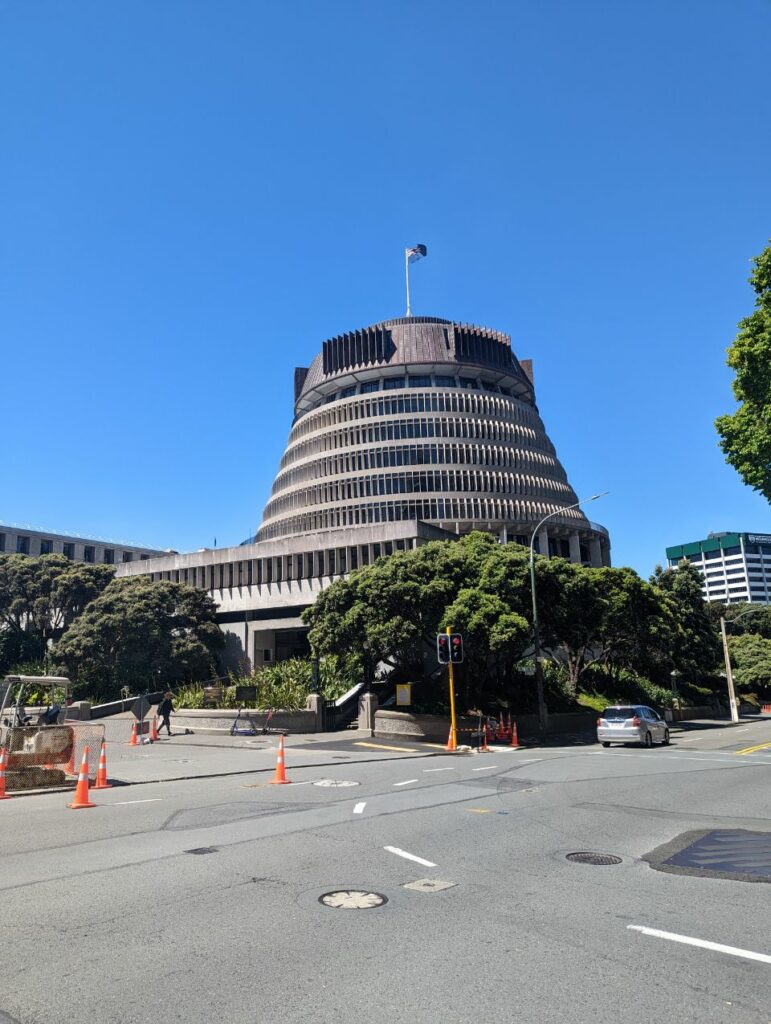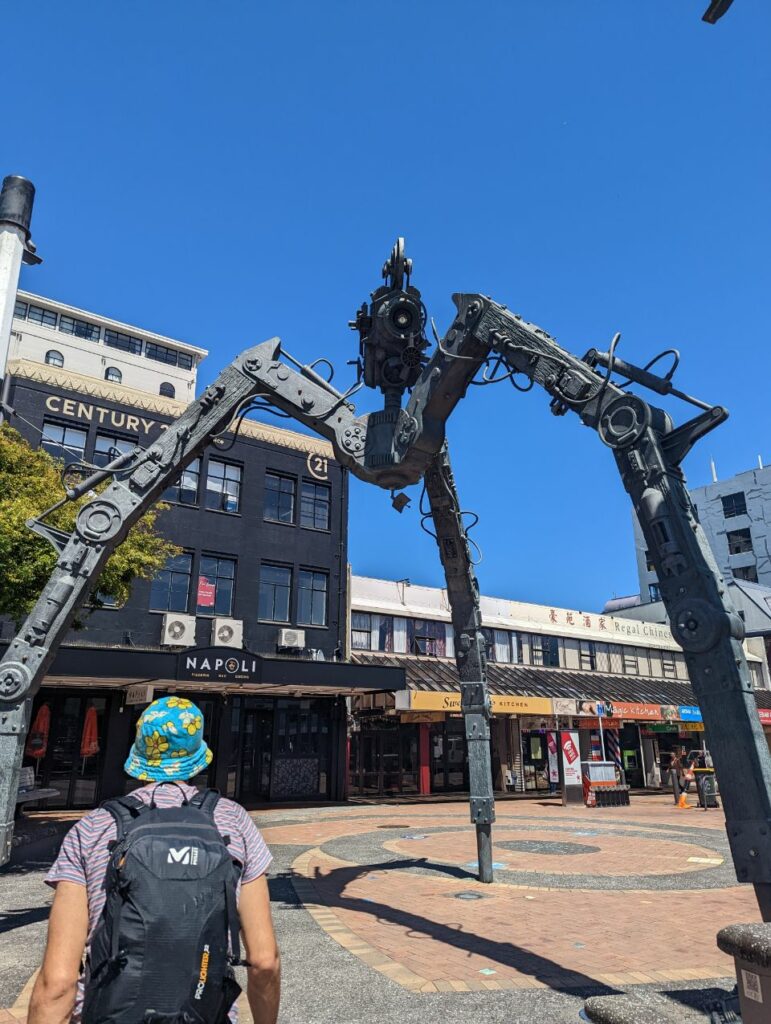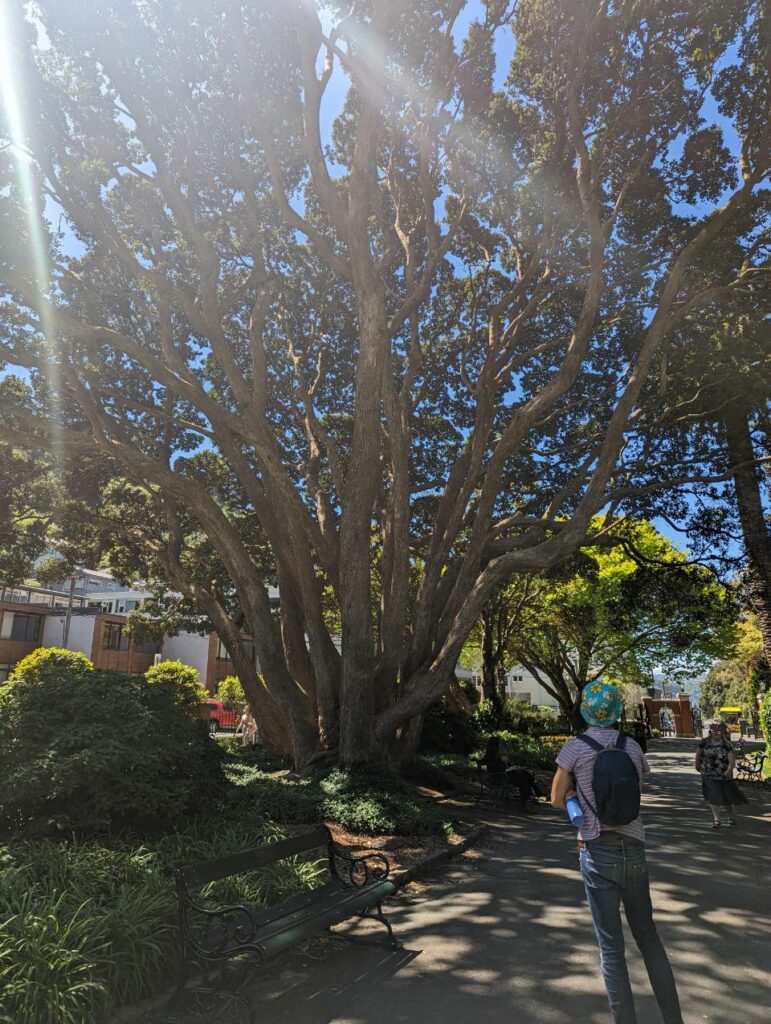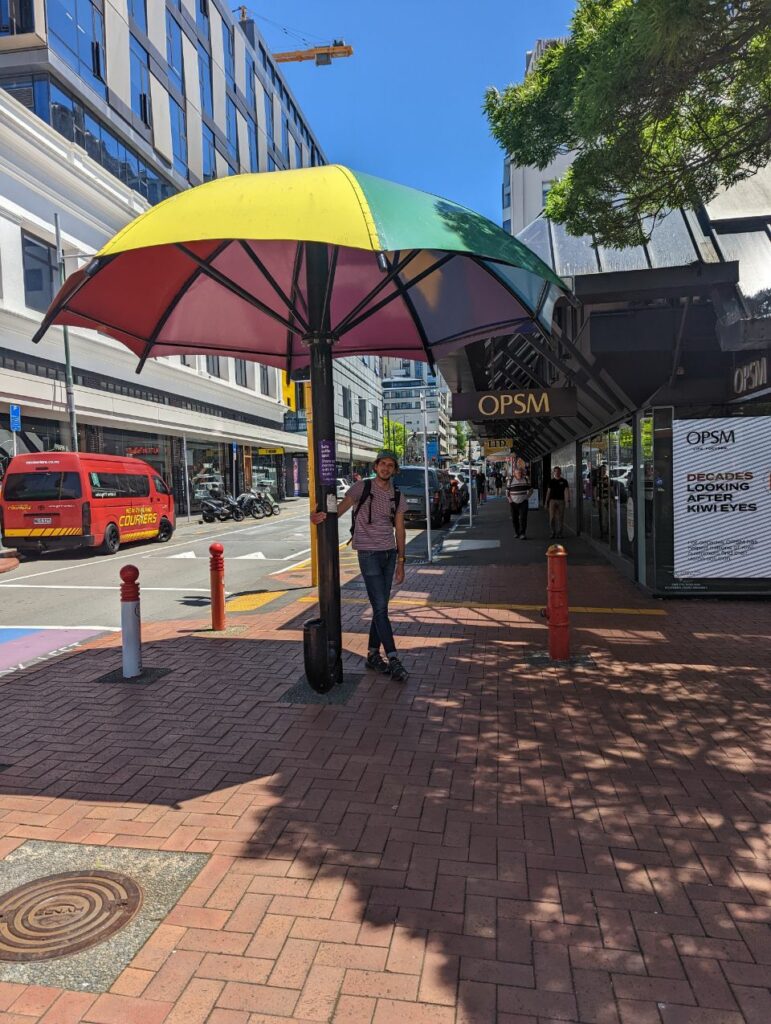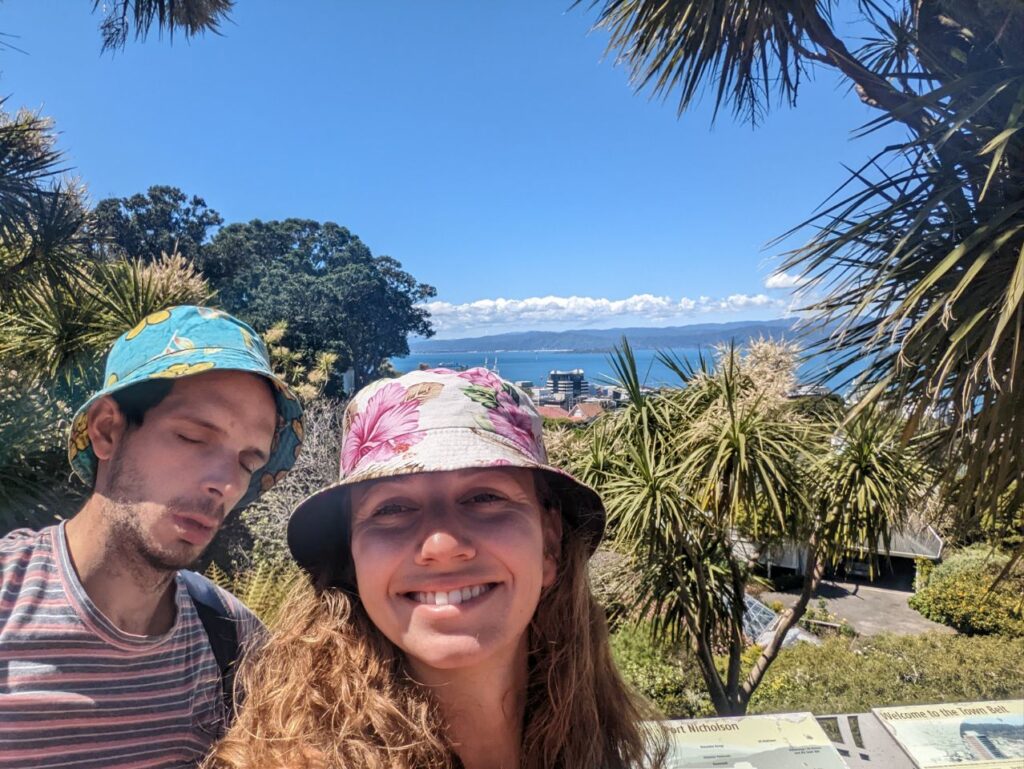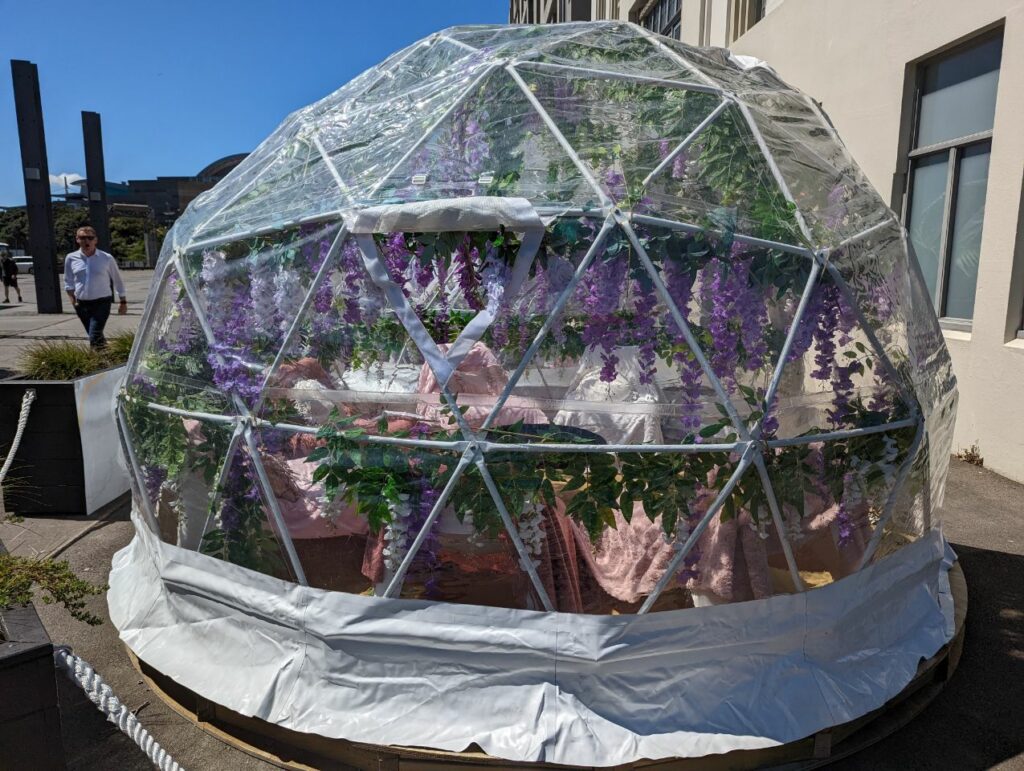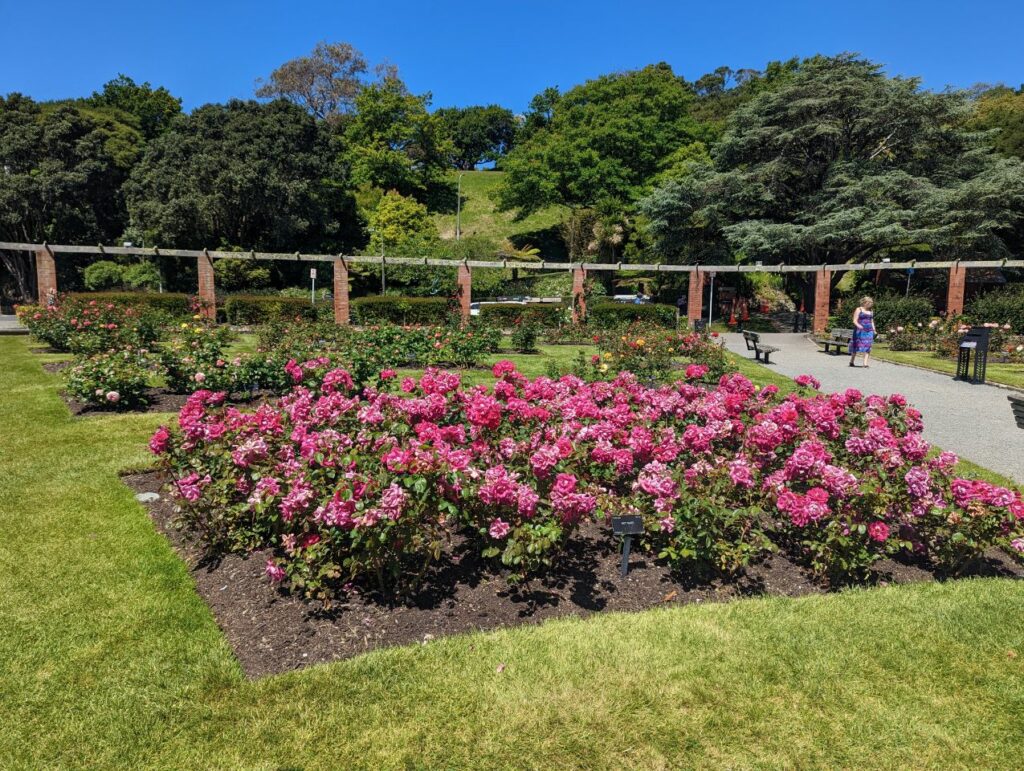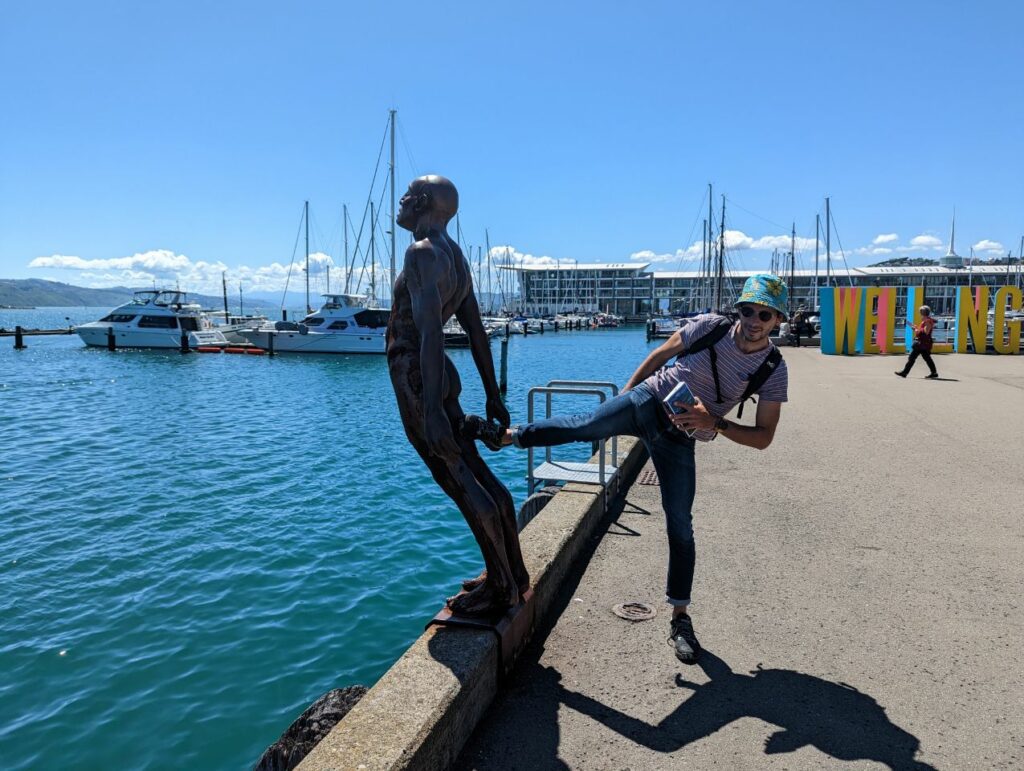Après une grosse journée de travail, aujourd’hui on visite Wellington à fond : ballade le.long des quai, le tour des sculptures de la ville ( pas incroyable mais sympa), le fameux funiculaire, le jardin botanique, la visite guidée du parlement ( incroyable) , une bonne glace dans Cuba St avant de finir avec une petite bière sur les quais !!!
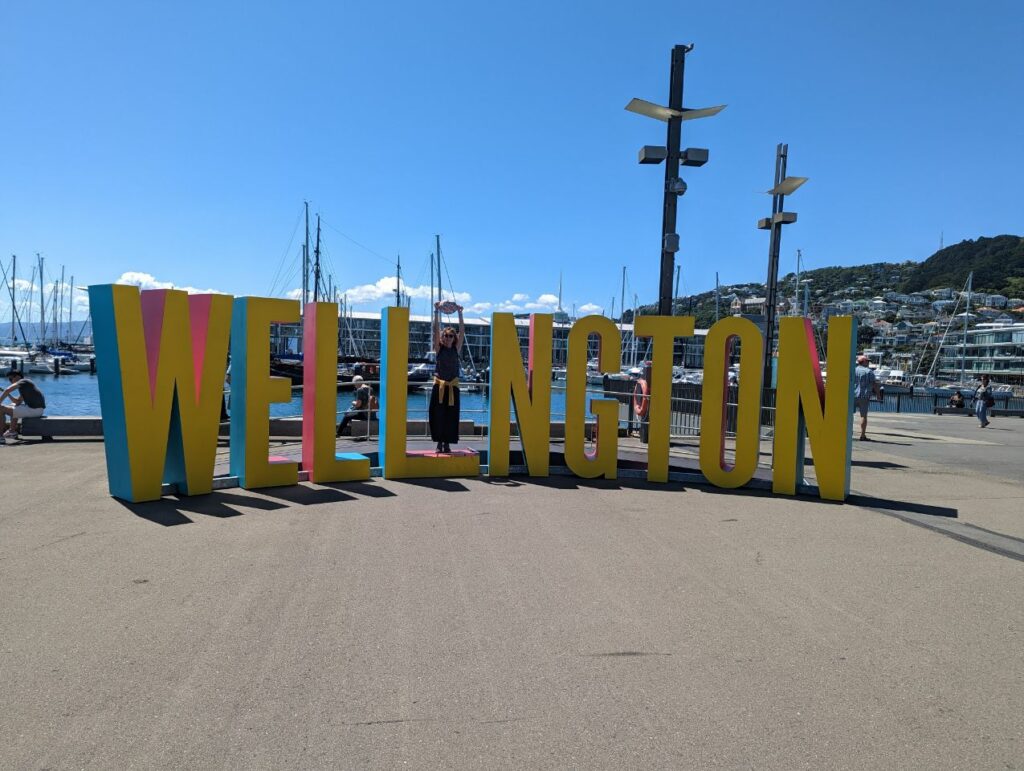
WELLINGTON
15th November 2022
Wellington (Māori: Te Whanganui-a-Tara [tɛ ˈɸaŋanʉi a taɾa] or Pōneke [pɔːnɛkɛ]) is the capital city of New Zealand. It is located at the south-western tip of the North Island, between Cook Strait and the Remutaka Range. Wellington is the second-largest city in New Zealand by metro area, and is the administrative centre of the Wellington Region. It is the world’s southernmost capital of a sovereign state.[11] Wellington features a temperate maritime climate, and is the world’s windiest city by average wind speed.[12]
Legends recount that Kupe discovered and explored the region in about the 10th century, with initial settlement by Māori iwi such as Rangitāne and Muaūpoko. The disruptions of the Musket Wars led to them being overwhelmed by northern iwi such as Te Āti Awa by the early 19th century.[13]
Wellington’s current form was originally designed by Captain William Mein Smith, the first Surveyor General for Edward Wakefield‘s New Zealand Company, in 1840.[14] The Wellington urban area, which only includes urbanised areas within Wellington City, has a population of 212,000 as of June 2022.[9] The wider Wellington metropolitan area, including the cities of Lower Hutt, Porirua and Upper Hutt, has a population of 434,900 as of June 2022.[9] The city has served as New Zealand’s capital since 1865, a status that is not defined in legislation, but established by convention; the New Zealand Government and Parliament, the Supreme Court and most of the public service are based in the city.[15]
Wellington’s economy is primarily service-based, with an emphasis on finance, business services, government, and the film industry. It is the centre of New Zealand’s film and special effects industries, and increasingly a hub for information technology and innovation,[16] with two public research universities. Wellington is one of New Zealand’s chief seaports and serves both domestic and international shipping. The city is chiefly served by Wellington International Airport in Rongotai, the country’s second-busiest airport. Wellington’s transport network includes train and bus lines which reach as far as the Kapiti Coast and the Wairarapa, and ferries connect the city to the South Island.
Often referred to as New Zealand’s cultural capital, the culture of Wellington is a diverse and often youth-driven one which has wielded influence across Oceania.[17][18][19] One of the world’s most liveable cities, the 2021 Global Livability Ranking tied Wellington with Tokyo as fourth in the world.[20] From 2017 to 2018, Deutsche Bank ranked it first in the world for both livability and non-pollution.[21][22] Cultural precincts such as Cuba Street and Newtown are renowned for creative innovation, « op shops« , historic character, and food. Wellington is a leading financial centre in the Asia-Pacific region, being ranked 35th in the world by the Global Financial Centres Index for 2021. The global city has grown from a bustling Māori settlement, to a colonial outpost, and from there to an Australasian capital that has experienced a « remarkable creative resurgence ».[23][24][25][26]
History
Māori settlement
Legends recount that Kupe discovered and explored the region in about the 10th century. Before European colonisation, the area in which the city of Wellington would eventually be founded was seasonally inhabited by indigenous Māori. The earliest date with hard evidence for human activity in New Zealand is about 1280.[38]
Wellington and its environs have been occupied by various Māori groups from the 12th century. The legendary Polynesian explorer Kupe, a chief from Hawaiki (the homeland of Polynesian explorers, of unconfirmed geographical location, not to be confused with Hawaii), was said to have stayed in the harbour from c. 925.[39][40] A later Māori explorer, Whatonga, named the harbour Te Whanganui-a-Tara after his son Tara.[41] Before the 1820s, most of the inhabitants of the Wellington region were Whatonga’s descendants.[42]
At about 1820, the people living there were Ngāti Ira and other groups who traced their descent from the explorer Whatonga, including Rangitāne and Muaūpoko.[13] However, these groups were eventually forced out of Te Whanganui-a-Tara by a series of migrations other iwi (Māori tribes) from the north.[13] The migrating groups were Ngāti Toa, which came from Kāwhia, Ngāti Rangatahi, from near Taumarunui, and Te Atiawa, Ngāti Tama, Ngāti Mutunga, Taranaki and Ngāti Ruanui from Taranaki. Ngāti Mutunga later moved on to the Chatham Islands. The Waitangi Tribunal has found that at the time of the signing of the Treaty of Waitangi in 1840, Te Atiawa, Taranaki, Ngāti Ruanui, Ngāti Tama, and Ngāti Toa held mana whenua interests in the area, through conquest and occupation.[13]

